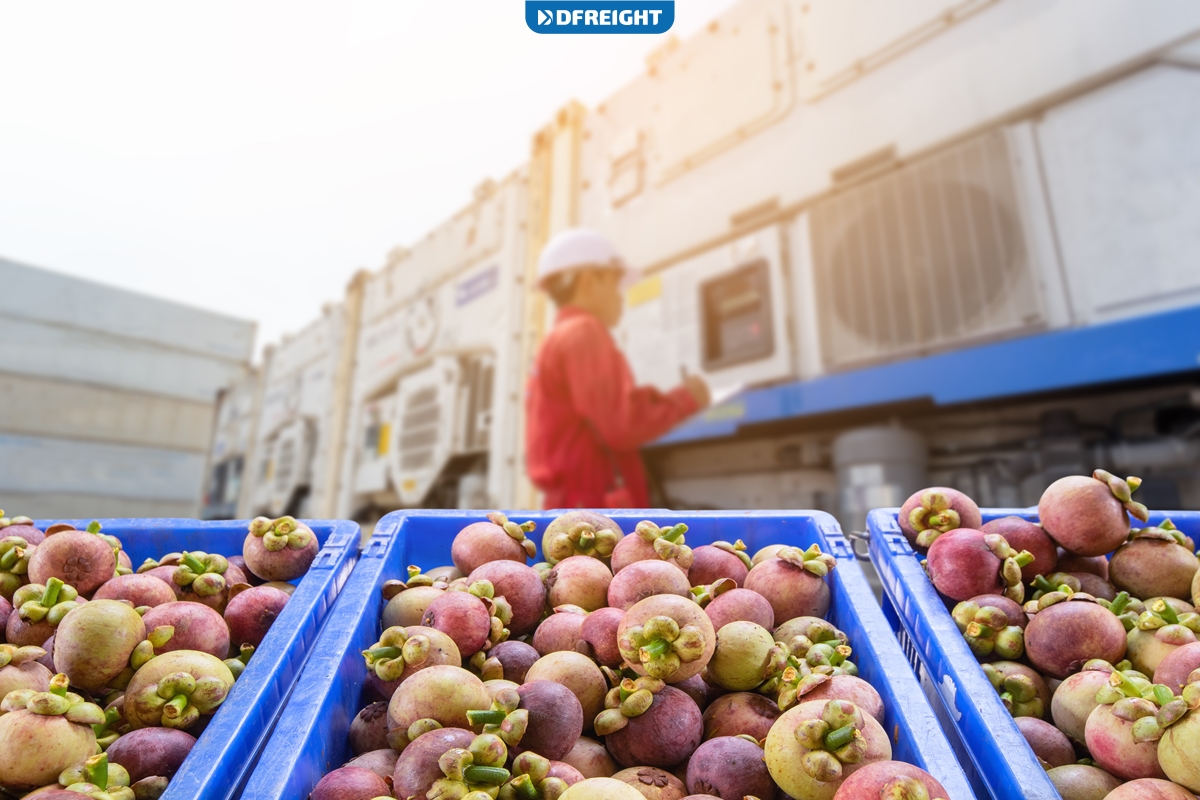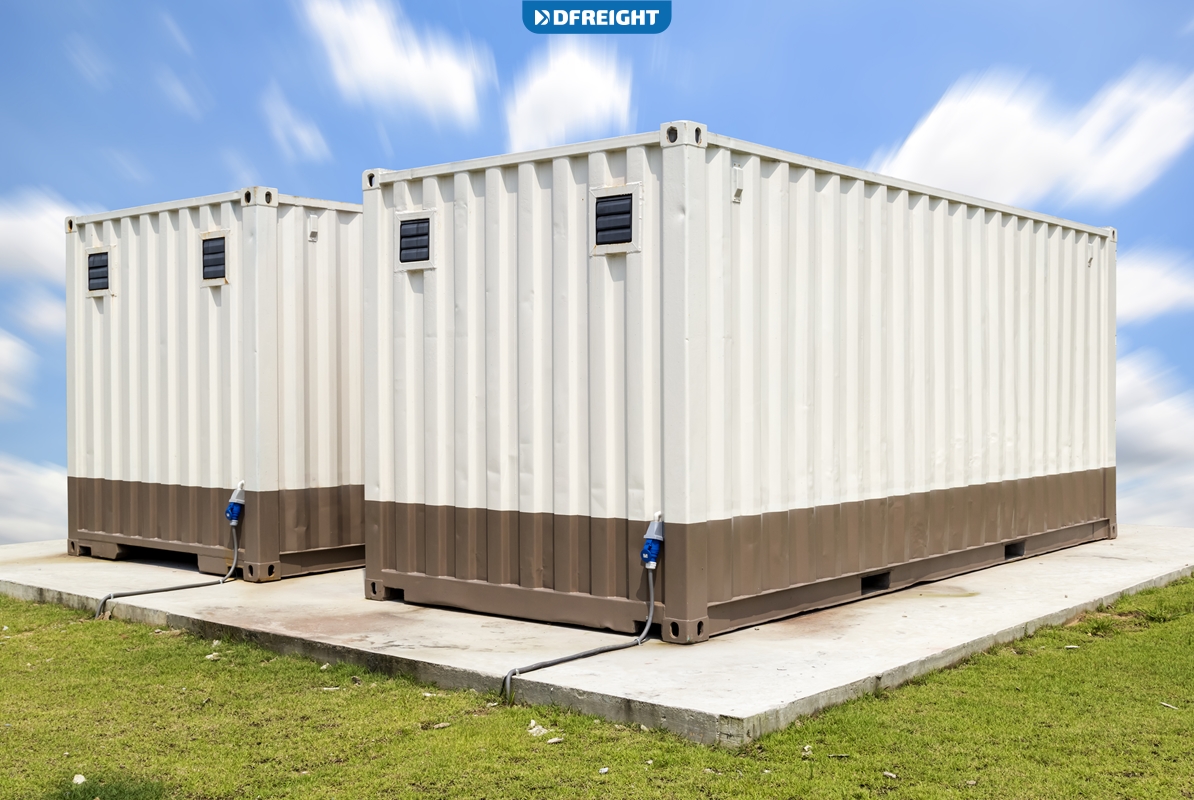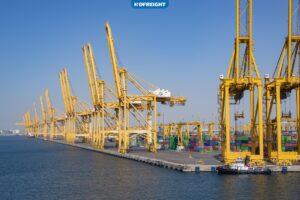When it comes to shipping goods safely and efficiently, ventilated shipping containers are essential. Whether you’re looking to ship fresh food, medical equipment, or any other temperature-sensitive products, these specialized containers provide air circulation, temperature control, and other features to keep your goods safe and fresh during transport. Read on to learn more about ventilated shipping containers, their history, the different types of ventilation, and the top 4 providers of ventilated shipping containers.
Table of Contents
An Introduction to Ventilated Shipping Containers
Ventilated shipping containers are specialized shipping containers that are designed to provide an enclosed, temperature-controlled environment while allowing air to circulate freely inside. They are typically used for shipping goods such as food, medical supplies, and other perishables that require a specific temperature to remain safe.
These containers are designed to protect goods against extreme temperature changes and to keep them cool during transport. They are also designed to reduce the risk of condensation, which can cause mold or bacterial growth.
Ventilated shipping containers are commonly used in the food industry, where they are used to ship fresh fruits and vegetables, as well as in the medical industry, where they are used to ship pharmaceuticals and vaccines that require cold chain storage.
To learn more about different types of shipping containers, read the following posts:
| Shipping Containers | Dry Containers |
| Open Top Containers | Insulated Container |
| Hard Top Container | Flat Rack Container |
| Tank Container | Platform Container |
Brief History of Ventilated Shipping Containers

Ventilated shipping containers have been around since the early 20th century when they were first developed by the U.S. military to transport goods during World War I. The containers were designed to keep perishables safe during long journeys and were an integral part of the war effort.
In the years after, the design of ventilated shipping containers has evolved to include new features including temperature control and air circulation. Today, these containers are used in many industries to store and transport goods, from food to medical supplies. They are an essential component of the global supply chain, helping to keep goods safe and fresh during transport.
Natural Ventilation vs. Forced Ventilation
Natural Ventilation is the most common method used in ventilated shipping containers. This type of ventilation relies on the natural flow of air to move through the container and keep it at a comfortable temperature. This method is most commonly used when shipping items that require a moderate temperature, such as food or medical supplies.
Forced Ventilation is a more advanced form of ventilation in shipping containers, where the air is forced through the container using fans or other mechanical means. This type of ventilation is more efficient than natural ventilation and is typically used when shipping items that require a specific temperature to remain safe. Forced ventilation also helps to reduce condensation and keep the container dry.
Benefits of Ventilated Shipping Containers
Ventilated shipping containers provide a wide range of benefits to their users. They keep goods safe and at the desired temperature during transport, reducing the risk of spoilage or damage due to extreme temperatures. They are also more efficient than traditional containers, reducing the amount of energy required for shipping and storage. Lastly, they help to reduce the risk of moisture build-up and can help to decrease the volume of air pollutants released into the atmosphere.
What Are VH Categories?
VH (Ventilated and Heated) Categories are a system used to classify ventilated shipping container ventilation and heating requirements.
The system is divided into four categories, ranging from VH1 to VH4. VH1 containers are the most basic, providing only natural ventilation and no heating. VH2 containers are similar, but provide additional insulation to retain heat. VH3 and VH4 containers offer more advanced features such as forced ventilation, heating, humidity control, and air filtration. These containers are ideal for shipping items that require a specific temperature and humidity level to remain safe during transport.
The Structure of Ventilated Shipping Containers
Ventilated shipping containers are typically made of a steel frame and a corrugated steel skin. The frame provides the structural integrity of the container and the skin helps to protect the contents from the elements.
Inside, the container is typically lined with insulation to help maintain the desired temperature. The container also features a ventilation system consisting of vents, fans, and ducts that allow air to circulate freely inside. The container also features a variety of seals and gaskets to keep the interior airtight and reduce the risk of condensation, and several dampers and vents to control the flow of air into and out of the container.
Lashing rings are also an essential component of ventilated shipping containers. These rings are fitted around the container’s walls and floor to provide secure lashing points for cargo straps or other lashing devices.
The lashing rings are typically made of high-grade steel and can withstand the strain of cargo being loaded and unloaded. The lashing rings also help to keep the cargo secure during transport and prevent it from shifting or being damaged by the elements. They are usually located in the four corners of the container and along the sides to ensure that cargo can be securely and safely secured.
Ventilated Containers vs. Refrigerated Containers
Ventilated Shipping Containers and Refrigerated Shipping Containers are often confused with one another. However, they are different and serve different purposes.
Ventilated Containers:
- Ideal for shipping goods that require air circulation, such as fabrics, furniture, and electronics.
- Typically constructed out of steel and feature vents to facilitate airflow.
- Some models feature adjustable ventilation systems that allow users to control the amount of airflow.
- Can be used to ship goods over long distances, such as by ocean freight.
- Not ideal for shipping goods that require a temperature-controlled environment, such as pharmaceuticals and food items.
Refrigerated Containers:
- Ideal for shipping goods that require a temperature-controlled environment, such as pharmaceuticals and food items.
- Typically constructed out of steel and insulated with polyurethane foam to maintain a consistent temperature.
- Feature a refrigeration system to control the temperature and humidity levels inside the container.
- Can be used to ship goods over long distances, such as by ocean freight.
- Not ideal for shipping goods that require air circulation, such as fabrics, furniture, and electronics.
Ventilated Containers vs. Insulated Containers
Ventilated shipping containers are designed to provide a steady airflow to the goods inside the container. These containers typically feature perforated walls and doors, as well as fans and vents to ensure airflow. This type of container is most effective when transporting goods that require ventilation, such as food and beverages, but they are also suitable for transporting other goods that require temperature regulation. Ventilated shipping containers are often used to transport goods over long distances and are typically made of aluminum or steel.
Insulated shipping containers are designed to keep the temperature of the goods inside the container stable. These containers feature insulation, usually made of foam and polystyrene, to keep the temperature inside the container within a certain range. The insulation also helps to keep the goods from being exposed to humidity and other environmental factors. Insulated shipping containers are often used to ship goods that are heat-sensitive or require a certain temperature range to remain in optimal condition, such as electronics and pharmaceuticals. The material used for insulation varies depending on the type of goods being transported.
Although both types of containers are designed to protect goods, they have different strengths and weaknesses. Ventilated shipping containers are more suitable for goods that require ventilation, while insulated shipping containers are better at protecting goods from temperature and humidity. Additionally, insulated shipping containers are usually heavier than ventilated shipping containers, making them more expensive to transport than normal container shipping rates. Ultimately, the type of container you choose will depend on the type of goods you are shipping and their specific needs.
Top 4 Providers of Ventilated Shipping Containers
The most significant providers of ventilated shipping containers are Hapag-Lloyd, Maersk, CMA CGM, and MSC. These companies are the biggest players in the market and are known for providing high-quality, reliable containers.
Hapag-Lloyd specializes in refrigerated containers and offers a wide range of sizes for different applications. Maersk is one of the largest container shipping companies in the world and is known for its reliable and efficient services. CMA CGM is a French shipping company with a portfolio of specialized containers for various applications. Lastly, MSC is a Switzerland-based company that specializes in providing refrigerated and insulated containers for the transportation of temperature-sensitive goods.
Secure Your Products with DFreight: The Safe, Reliable Ventilated Shipping Solution
At DFreight, we understand the importance of reliable transportation for your business. That’s why we offer a full range of ventilated shipping options to help you transport your goods safely and efficiently. We also offer specialized containers from top global shipping lines for different types of goods, such as food, medical supplies, and other perishables. With our ventilated shipping containers, you can trust that your products will stay safe and fresh during transport. Contact us today to learn more about how we can help you with shipping your products.
What are ventilated shipping containers?
Ventilated shipping containers are specialized containers that are designed to provide an enclosed, temperature-controlled environment while allowing air to circulate freely inside.
What goods require ventilated shipping containers?
Ventilated shipping containers are typically used for shipping goods such as food, medical supplies, and other perishables that require a specific temperature to remain safe.
What is the difference between natural ventilation and forced ventilation?
Natural ventilation relies on the natural flow of air to move through the container and keep it at a comfortable temperature. Forced ventilation is a more advanced form of ventilation, where the air is forced through the container using fans or other mechanical means.
What are the benefits of ventilated shipping containers?
Ventilated shipping containers provide a wide range of benefits, including keeping goods safe and at the desired temperature during transport, reducing the amount of energy required for shipping and storage, and reducing the risk of moisture build-up.
What is the difference between ventilated containers and refrigerated containers?
Ventilated containers are ideal for shipping goods that require air circulation, such as fabrics, furniture, and electronics. Refrigerated containers are ideal for shipping goods that require a temperature-controlled environment, such as pharmaceuticals and food items.














